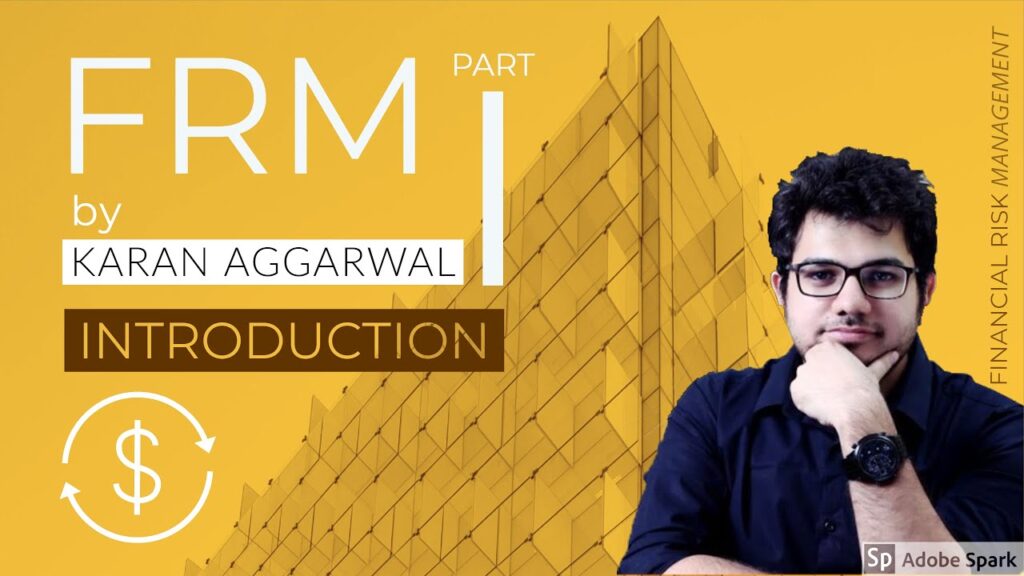Shut your doors, drop the drapes on your windows and don’t bother looking at the clock because it’s always the same time, “FRM preparation time”
The FRM syllabus is broken down into syllabus for FRM Part 1 and syllabus for FRM Part 2.
FRM Syllabus breakdown:

FRM Part 1 Syllabus:
FRM Syllabus covers the fundamental tools and techniques used in risk management and the theories that underlie their use. Specific areas of coverage and their weighting in the Syllabus for FRM Part 1 are:
1. Foundations of Risk Management (20%)
This area focuses on a candidate’s knowledge of foundational concepts of risk management and how risk management can add value to an organization and includes:
- An understanding of corporate risk governance and the trade-off between risk and return
- The construction of efficient portfolios
- Fundamental asset pricing models
- Enterprise risk management frameworks
- Data quality management
- A review of major financial disasters
- To emphasize the importance of ethics as a fundamental requirement for sound risk management, applications of the GARP Code of Conduct to professional situations are covered in this section as well
2. Quantitative Analysis (20%)
This area tests a candidate’s knowledge of basic probability and statistics, regression and time series analysis, and various quantitative techniques useful in risk management such as:
- Monte Carlo methods
- Volatility forecasting models
- Value-at-Risk estimation
3. Financial Markets and Products (30%)
This area tests the candidate’s knowledge of financial products and the markets in which they trade, including:
- Futures and forwards
- Equity options, swaps, and other derivatives
- Commodities
- Currencies
- Corporate bonds and interest rates
- A basic understanding of arbitrage arguments and hedging related to these financial products
4. Valuation and Risk Models (30%)
This area of FRM Pa will test a candidate’s knowledge of valuation techniques and risk models. This includes:
- Basic bond valuation and bond hedging
- Valuation using binomial trees
- An understanding of the Black-Scholes-Merton model
- Value-at-Risk (VaR)
- Expected and unexpected loss estimation
- Stress testing
FRM Part 2 Syllabus
Part II of the FRM Exam further applies the tools and techniques covered in Part I and delves more deeply into major sub-areas of risk management. Specific areas of coverage include:
1. Market Risk Management (25%)
This section tests a candidate’s knowledge of market risk measurement and management techniques. These include:
- Fixed-income interest rate sensitivities
- Volatility exposures
- Value-at-Risk (VaR) and back testing VaR
- Expected shortfall (ES)
- Correlations and copulas
- Parametric and non-parametric estimation methods
- Extreme value theory (EVT)
- Exotic options and mortgage-backed securities
Download: FRM Part 1 Free Study Material
2. Credit Risk Management (25%)
This area focuses on a candidate’s understanding of credit risk management with some focus given to structured finance and credit products such as collateral debt obligations and credit derivatives. Knowledge of counter party risk is also tested, as well as default risk and methodologies used to measure it, such as Credit VaR.
3. Operational and Integrated Risk Management (25%)
This section of FRM Part 2 November syllabus addresses a candidate’s knowledge of two areas of increasing importance for many firms—operational risk management and integrated risk management. This includes:
- Coverage of the tools and techniques necessary to measure, manage, and mitigate operational risk
- Economic capital allocation
- Enterprise risk management (ERM)
- Knowledge of critical issues related to liquidity risk management, model risk, loss data modelling and IT infrastructure, stress testing, and risk appetite
- Importantly, this section also tests a candidate’s knowledge of key regulations and the major international regulatory frameworks relevant to risk managers today, such as Basel
4.Risk Management and Investment Risk Management (15%)
This area focuses on a candidate’s knowledge of risk management techniques applied to the investment management process. Topics such as portfolio construction and performance analysis are covered, as well as risk budgeting and portfolio and component VaR. Issues related to hedge funds and private equity investments are also covered.
5. Current Issues in Financial Markets (10%)
The candidate is expected to familiarize him/herself with the readings from this section,approaching each paper critically as a risk manager equipped with the knowledge from the other sections. This area of the Exam will test a candidate’s knowledge of the material covered by each paper. Recent topics have included:
- Sovereign Risk and Financial Crisis
- Flash Crash
- Financial Innovation and Its Issues
That’s the syllabus for FRM, All the best with you preparation!
Source: edupristine.com




Be the first to write a comment.